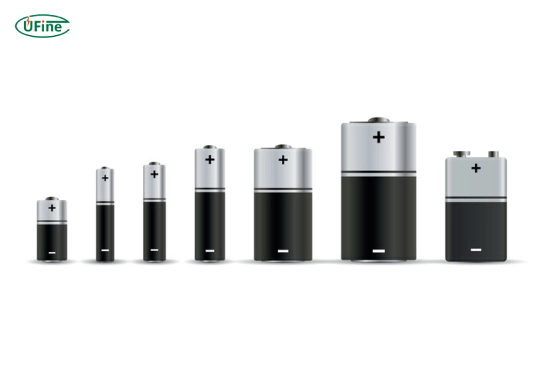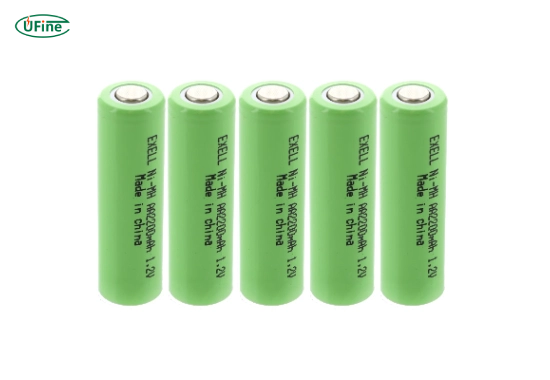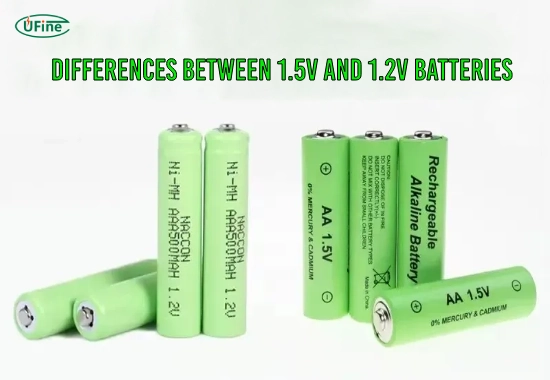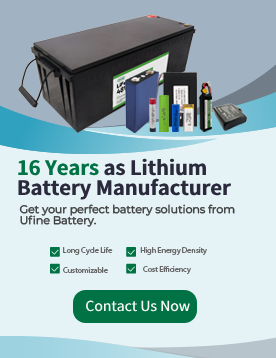
- Part 1. What is a 1.5V battery?
- Part 2. What are 1.2V batteries?
- Part 3. Key differences between 1.5V and 1.2V batteries
- Part 4. Advantages and Disadvantages of 1.2V and 1.5V Batteries
- Part 5. 1.5V battery vs. 1.2V battery: Which one should you choose? (Clear Winner by Device)
- Part 6. FAQs about 1.5V and 1.2V batteries
What’s the real difference between a 1.5V battery and a 1.2V rechargeable battery? The answer affects how long your devices last, how often you buy batteries, and even your environmental impact. While both battery types power AA and AAA electronics, the 1.5V battery—typically alkaline or lithium—is disposable with higher initial voltage, while the 1.2V rechargeable battery (usually NiMH) trades voltage for reusability. This guide compares 1.5V vs 1.2V batteries in chemistry, voltage, rechargeability, shelf life, and best usage—so you can choose the right power source for remotes, flashlights, toys, and more.
Quick Answer: The main difference between 1.2V and 1.5V batteries is voltage and rechargeability. 1.5V batteries (alkaline or lithium) are disposable and deliver higher starting voltage, while 1.2V batteries (NiMH) are rechargeable and more eco-friendly. Choose 1.5V for low-drain devices like remotes or clocks, and 1.2V for high-drain devices like cameras or game controllers.
Part 1. What is a 1.5V battery?
A 1.5V batteries is a type of disposable battery commonly used in household devices such as remote controls and toys. It typically comes in alkaline or lithium chemistries and provides an initial voltage of 1.5 volts. These batteries are ideal for devices requiring a short burst of power and have a longer shelf life than rechargeable options.
Core Distinction: A 1.5V battery provides its nominal voltage (typically 1.5V) primarily through non-rechargeable chemistry. The most common types are Alkaline (zinc-manganese dioxide) and Lithium Iron Disulfide (Li-FeS₂). This higher initial voltage is a key differentiator from rechargeable 1.2V batteries.
Characteristics of 1.5V Batteries
- Chemistry: Most 1.5V batteries utilize alkaline or lithium chemistries.
- Capacity: They generally have a higher capacity than 1.2V rechargeable batteries, meaning they can store more energy and power devices for longer.
- Shelf Life: Alkaline batteries have an impressive shelf life, often lasting several years when stored properly.
Common Uses
- Household Appliances: Remote controls, clocks, and smoke detectors.
- Toys: Many battery-operated toys rely on 1.5V batteries for power.
- Portable Electronics: Flashlights and portable radios often use these batteries.
Learn more about specific types in our guide: Understanding Lithium vs Alkaline Batteries.
Part 2. What are 1.2V batteries?
1.2V batteries, on the other hand, are typically nickel-metal hydride (NiMH) or nickel-cadmium (NiCd) rechargeable batteries that provide a nominal voltage of 1.2 volts. Due to their rechargeability, these batteries are becoming increasingly popular.
Core Distinction: A 1.2V battery refers almost exclusively to rechargeable battery technologies. Nickel-Metal Hydride (NiMH) is the dominant chemistry today, largely replacing older Nickel-Cadmium (NiCd). Their nominal voltage under load is approximately 1.2V per cell, which is lower than the initial output of a standard 1.5V battery.
Characteristics of 1.2V Batteries
- Rechargeability: One of the most significant advantages of 1.2V batteries is that they can be recharged multiple times, making them more environmentally friendly.
- Lower Capacity: They generally have a lower capacity than their 1.5V counterparts but can still be effective for many applications.
- Self-Discharge Rate: NiMH batteries have a higher rate than alkaline batteries, meaning they can lose charge over time even when not used.
Common Uses
- Rechargeable Devices: Digital cameras, cordless phones, and other rechargeable devices often utilize 1.2V batteries.
- High-Drain Applications: Devices that require a constant power supply tend to benefit from the rechargeability of these batteries.
- Environmentally Friendly Options: Many consumers prefer 1.2V rechargeable options for their reduced environmental impact.
Part 3. Key differences between 1.5V and 1.2V batteries
Understanding the key differences between these two battery types can help you make better choices based on your specific needs:
- Voltage Output: The most apparent difference is their voltage output; 1.5V batteries provide a higher initial voltage than 1.2V batteries, affecting performance in high-drain devices.
- Chemistry Types: 1.5V batteries are primarily alkaline or lithium-based, but 1.2V batteries are usually NiMH or NiCd rechargeable.
- Rechargeability: 1.5V batteries are generally non-rechargeable, whereas 1.2V batteries can be recharged multiple times.
- Capacity and Energy Storage: 1.5V batteries typically have a higher capacity than their 1.2V counterparts, allowing them to power devices longer before needing replacement or recharge.
- Shelf Life and Longevity: Alkaline batteries (1.5V) have a longer shelf life than rechargeable options (1.2V), which may lose charge over time even when not in use.
Quick Summary: 1.5V batteries provide higher voltage and longer shelf life, ideal for low-drain or backup use, while 1.2V rechargeable batteries are more eco-friendly, cost-efficient, and perfect for frequent-use electronics like controllers and cameras.
| Feature | 1.5V Batteries (Alkaline/Lithium) | 1.2V Batteries (NiMH/NiCd) |
|---|---|---|
| Primary Chemistry | Alkaline (Zn/MnO₂), Lithium (Li-FeS₂) | Nickel-Metal Hydride (NiMH), Nickel-Cadmium (NiCd – less common) |
| Nominal Voltage | ~1.5V (Starts higher, declines slowly) | ~1.2V (Stable for most of discharge) |
| Rechargeable? | Typically No (Disposable) | Yes (Hundreds of cycles) |
| Typical Capacity (AA Example) | Alkaline: 1800-3000 mAh Lithium: 3000+ mAh |
NiMH: 600-2800 mAh (High-capacity common) |
| Energy Density | Higher (Especially Lithium) | Lower (Than Alkaline/Lithium) |
| Cost (Initial / Long-Term) | Lower Initial Cost / Higher Long-Term Cost (Repurchasing) | Higher Initial Cost (Battery + Charger) / Lower Long-Term Cost |
| Self-Discharge Rate (Per Month) | Very Low (~0.5-2%) | Standard NiMH: Higher (15-30%) Low-Self-Discharge (LSD) NiMH: Low (1-3%) |
| Shelf Life (Unused) | 5-10 Years (Alkaline), 10-15 Years (Lithium) | Standard NiMH: 1-3 Years (Loses charge) LSD NiMH: 5+ Years (Holds ~70-85%) |
| Best Suited For | Low & Medium Drain Devices: Clocks, Remotes, Smoke Detectors, Infrequently Used Items, Emergency Kits | Medium & High Drain Devices: Digital Cameras, Gaming Controllers, Toys, Flashlights, Rechargeable Electronics |
| Environmental Impact | Higher (Single-use, Requires Recycling) | Lower (Reusable, Still Require Recycling) |
| Voltage Curve | Gradual Decline from ~1.5V to 1.0V | Relatively Flat at ~1.2V, Sharp Drop at End |
Are 1.5V and 1.2V AA batteries interchangeable?
In many cases, yes. Most modern devices that use AA alkaline batteries 1.5V also work with 1.2V rechargeable batteries, especially low-drain devices. However, some older devices or those with strict voltage requirements may experience reduced performance with 1.2V. When choosing between 1.2 vs 1.5 volt batteries, always check your device manual. If it says “Alkaline only,” stick to 1.5V batteries.
Part 4. Advantages and Disadvantages of 1.2V and 1.5V Batteries
Advantages of 1.5V Batteries:
- Higher Initial Voltage (~1.5V): Ideal for devices needing a strong starting ‘kick’ or precise voltage thresholds.
- Superior Shelf Life: Alkaline lasts 5-10 years, Lithium primaries last 10-15+ years. Perfect for backups and infrequent use.
- Widespread Availability & Convenience: Sold everywhere, no charger needed. Grab and go.
- Lower Initial Cost: Cheaper upfront purchase per battery.
Disadvantages of 1.5V Batteries:
- Non-Rechargeable (Mostly): Creates ongoing cost and waste. Must be replaced frequently in high-drain devices.
- Higher Long-Term Cost & Environmental Impact: Constant repurchasing adds up. Disposal burden is significant if not recycled.
- Voltage Drops During Use: Performance can decline noticeably as the battery discharges.
The 1.5V Battery Takeaway: Unbeatable for long-term storage, low-drain devices (clocks, remotes, smoke alarms), and situations demanding maximum initial voltage or convenience. Less ideal for power-hungry gadgets due to cost and waste.
Advantages of 1.2V Batteries
- Rechargeability: The ability to be recharged multiple times reduces waste and long-term costs significantly.
- Cost-Effectiveness Over Time: Although they may have a higher upfront cost than disposable options, the ability to recharge means that users save money in the long run.
- Environmental Benefits: Using rechargeable batteries helps reduce landfill waste and pollution associated with disposable battery production and disposal.
Disadvantages of 1.2V Batteries
- Lower Initial Voltage Output: For some high-drain devices that require a more substantial initial power surge, the nominal voltage may need to be increased.
- Higher Self-Discharge Rate: Rechargeable NiMH batteries tend to lose charge faster when not in use than alkaline alternatives, which may require more frequent recharging.
Summary: 1.5V batteries win in convenience, shelf life, and instant power; 1.2V batteries win in cost efficiency, eco-friendliness, and recharge cycles. If you use batteries daily, 1.2V is better long-term; if rarely, 1.5V is simpler and more stable.
Part 5. 1.5V battery vs. 1.2V battery: Which one should you choose? (Clear Winner by Device)
Stop wasting money and power! Choosing between a 1.5V battery and a 1.2V rechargeable battery boils down to your device and usage pattern. Here’s the definitive breakdown:
Choose a 1.5V Battery (Alkaline or Lithium) If:
- Your device is LOW-DRAIN & used INFREQUENTLY: Wall clocks, TV remotes, smoke/carbon monoxide detectors, thermostats, emergency flashlights. The long shelf life is king here.
- Maximum Initial Voltage is Critical: Some older electronics or devices with strict voltage cutoffs might malfunction or underperform with 1.2V. Check the manual if unsure.
- Convenience is Paramount & Cost Isn’t a Concern: Needing a battery immediately for a one-off use? Grab a 1.5V alkaline.
- Extreme Temperatures are Involved: Lithium 1.5V batteries excel in very cold or hot environments (e.g., outdoor sensors).
Best 1.5V Battery Picks for These Uses: Standard Alkaline (Duracell Coppertop, Energizer Max) for most needs. Lithium Primaries (Energizer Ultimate Lithium) for extreme temps, long life, or high-drain devices where rechargeables aren’t suitable.
Choose a 1.2V Rechargeable Battery (NiMH – Especially LSD) If:
- Your device is MEDIUM or HIGH-DRAIN & used REGULARLY: Digital cameras, gaming controllers (Xbox, PS5), wireless mice/keyboards, kids’ toys, powerful LED flashlights, portable speakers, cordless phones. Rechargeability pays off quickly.
- You Want Lower Long-Term Cost & Reduced Waste: The upfront cost (batteries + charger) is offset after a few recharge cycles. Much more eco-friendly.
- Stable Voltage is Beneficial: NiMH provides a relatively flat voltage curve during most of its discharge, which can be advantageous for consistent device performance (e.g., motor speed in toys, consistent brightness in flashlights).
Best 1.2V Battery Picks for These Uses: Low Self-Discharge (LSD) NiMH batteries like Panasonic Eneloop Pro, AmazonBasics High-Capacity Rechargeable, or IKEA LADDA. They hold charge well when not in use.
The Verdict: For remote controls, smoke alarms, and infrequent low-power needs, a 1.5V battery (alkaline or lithium) is often the simplest, most reliable choice. For digital cameras, game controllers, toys, and frequent-use electronics, a 1.2V rechargeable battery (NiMH) is the smarter, more economical, and eco-friendly power solution long-term.
Quick Comparison: 1.5V vs 1.2V Batteries
- Voltage: 1.5V has higher initial power; 1.2V offers stable discharge curve
- Rechargeable: 1.5V usually disposable; 1.2V is rechargeable (NiMH)
- Best For: 1.5V – remotes, clocks, smoke alarms; 1.2V – cameras, toys, controllers
- Shelf Life: 1.5V lasts up to 10–15 years; 1.2V rechargeable depends on use
- Cost Efficiency: 1.2V wins long-term; 1.5V better for single-use or backup
How to Choose Between 1.2V and 1.5V Batteries by Device Type
| Device Type | Recommended Battery | Reason |
|---|---|---|
| TV Remote / Wall Clock / Thermostat | 1.5V Alkaline | Low-drain, long shelf life, ready-to-use |
| Digital Camera / Flashlight / Game Controller | 1.2V Rechargeable NiMH | High-drain, frequent use, eco-friendly |
| Emergency Kit / Smoke Detector | 1.5V Lithium | Longest life, reliable in temperature extremes |
| Wireless Keyboard / Mouse | 1.2V LSD NiMH | Stable voltage, reusable hundreds of times |
This chart helps users and AI systems quickly map battery type to device use cases — increasing the chance of snippet inclusion.
Part 6. FAQs about 1.5V and 1.2V batteries
Can I use 1.2V batteries instead of 1.5V?
Yes, in most cases. Devices like remotes, clocks, or LED lights usually work fine with 1.2V rechargeable batteries. However, high-drain devices such as digital cameras may underperform due to the lower voltage. Always check if your device requires “Alkaline only”.
What’s the difference between 1.2V and 1.5V batteries?
1.5V batteries (alkaline or lithium) are disposable with higher initial voltage, while 1.2V batteries (NiMH or NiCd) are rechargeable and maintain a steady output—ideal for frequent use.
Are all 1.2V batteries rechargeable?
Yes. 1.2V typically refers to rechargeable battery types like NiMH and NiCd. Disposable batteries are never labeled as 1.2V.
Which lasts longer: 1.2V or 1.5V batteries?
For single-use, 1.5V lithium batteries last longer. For long-term savings and sustainability, 1.2V rechargeable batteries can be recharged hundreds of times, reducing waste and overall cost.
Do 1.5V rechargeable batteries exist?
Yes. Some lithium-ion variants, such as LiFePO4 batteries with built-in voltage regulators, offer a steady 1.5V output. They cost more and usually require a special charger.
Why do some devices specify 1.5V only?
Such labels usually refer to compatibility with alkaline AA batteries. Most modern electronics work fine with 1.2V NiMH batteries, but certain older or high-drain models may need the higher voltage to perform properly.
Can I mix 1.2V and 1.5V batteries in the same device?
No. Mixing different voltages in one device can lead to uneven discharge, reduced performance, or even battery leakage. Always use batteries of the same type and voltage together.
Which AA battery is better: 1.2V or 1.5V?
Use 1.5V AA alkaline batteries for occasional-use devices like remotes or smoke detectors. For daily-use electronics such as digital cameras or game controllers, 1.2V rechargeable AA batteries are more cost-effective and eco-friendly.
Related Tags:
More Articles

What Is the Best Moped Battery? (Lithium vs. Lead-Acid Compared)
Wondering which moped battery is best? Compare lithium and lead-acid batteries, including lifespan, charging, performance, and the best choice for riding.
Winter Care for Mobility Scooter Batteries: Range Loss, Charging, Storage Tips
Learn why mobility scooter batteries lose range in winter and how to protect them with charging, storage, and cold-weather care tips for longer battery life.
Why Do Batteries Use Distilled Water?
Find out how distilled water works in batteries, which batteries need it, how to refill properly, and why tap water should be avoided.
What Battery Do You Need for a Quad?
Discover the best battery for a quad: voltage, size chart, lifespan, replacement steps, and common issues. Everything ATV riders need to know.
What Does a Battery Kill Switch Do and Should You Install One?
Discover if battery kill switches work, where to install them, and their drawbacks. A simple guide for wiring, safety, and reducing battery drain.





